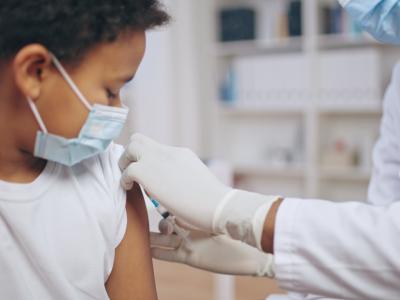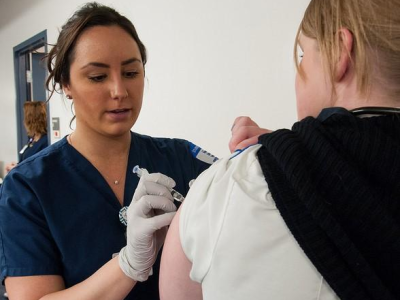In the United States, the childhood vaccination schedule has played a critical role in virtually eliminating life-threatening infectious diseases that once hospitalized and killed thousands of children each year.
Now, however, the Center for Disease Control and Prevention’s Advisory Committee on Immunization Practices, which is led by vaccine skeptics handpicked by Secretary of Health and Human Services Robert F. Kennedy, Jr, has created a new working group to examine the schedule, and officials in Washington, DC, are floating changes to how and when children receive vaccines.
No data suggesting schedule needs changing
Unfortunately, these conversations are largely untethered from scientific evidence. There are no data suggesting the current schedule is unsafe or ineffective. Instead, concerns are being raised based on subjective impressions that children receive “too many shots” too early, rather than basing recommendations on facts or clinical outcomes.
If children follow the current schedule, which includes the flu shot, they will receive 11 different vaccines by age 10—not including the respiratory syncytial virus (RSV) monoclonal antibody immunization—reducing the severity of 15 different infections. Some of these vaccines require multiple doses to train the body to effectively prevent infection.
Despite the increased number of diseases we’re able to vaccinate for today versus decades past, children are actually exposed to fewer immunogenic proteins and sugars—substances that help trigger immune responses—because vaccines today are “cleaner.” For example, the five routine vaccines given in 1960 exposed children to 3,217 immunogenic proteins and sugars, which are also called antigens. Vaccines today expose children to fewer than 170. Of note, the infant immune system handles thousands of new antigens daily from normal environmental exposure (far more than the antigens in all childhood vaccines combined).
Altering what vaccines are produced, especially moving away from combination vaccines, could take months or even years to adjust to.
Implementing the proposed changes—such as eliminating combined vaccines or spacing out doses—could cause major disruptions to the vaccine supply chain, affecting both availability and access. Vaccine manufacturing is a complex, tightly regulated process. Altering what vaccines are produced, especially moving away from combination vaccines, could take months or even years to adjust to, during which supply would fall short of demand. The result? Missed or delayed vaccinations, putting children’s health at risk.
Combination vaccines mean less stress for parents
Combination vaccines exist for a reason: They reduce the number of injections children receive. Any parent who’s brought an infant or toddler in for vaccines knows that fewer shots, along with fewer visits, are better. More appointments not only increase a child’s distress; increasing the number also raises the chances of missed visits, especially for families with limited flexibility in their schedules.
To understand how this plays out in the real world, let’s look at one of combination vaccines: the diphtheria-tetanus, pertussis-polio-hepatitis B-Haemophilus influenzae type B (DTaP-IPV-HepB-Hib) immunization, which combines to prevent six different infectious diseases. Breaking this up into four to six separate vaccines will require more, not fewer, visits to the pediatrician. The DTaP-IPV-HepB-Hib vaccine has a strong safety profile, and serious adverse health events are rare. There’s no evidence to suggest that administering shots separately would improve a child’s health or make a rare, adverse event less likely.
Studies like this 2017 one have, however, indicated that combination vaccines make it more likely that children stay on schedule for their recommended vaccines and complete them, which means they are better protected. The study found that “the likelihood of completing all vaccines in the series by 24 months was 2.5 times greater for children receiving combination vaccines compared with those receiving single-antigen vaccines only.” And “compared with children receiving single-antigen vaccines only, those receiving at least 1 combination vaccine were 2.2 times more likely to receive all vaccines on time and 2.4 times more likely to have less time undervaccinated.”
Before we change a vaccine schedule that has saved millions of lives, we should demand clear, compelling evidence to justify it.
This isn’t complicated. Combination vaccines mean fewer shots, fewer doctor’s visits, and less stress for both parents and children. So, if there’s no evidence that switching to single-antigen vaccines is safer—and if doing so would make vaccination harder, not easier—why are politicians pushing for this change?
Parents are right to demand evidence for anything given to their children. But that standard should go both ways. Before we change a vaccine schedule that has saved millions of lives, we should demand clear, compelling evidence to justify it.
Vaccine Integrity Project Viewpoints are authored by project staff and advisers. They are intended to address timely issues regarding vaccines with straight talk and clarity by presenting facts to counter falsehoods.



















